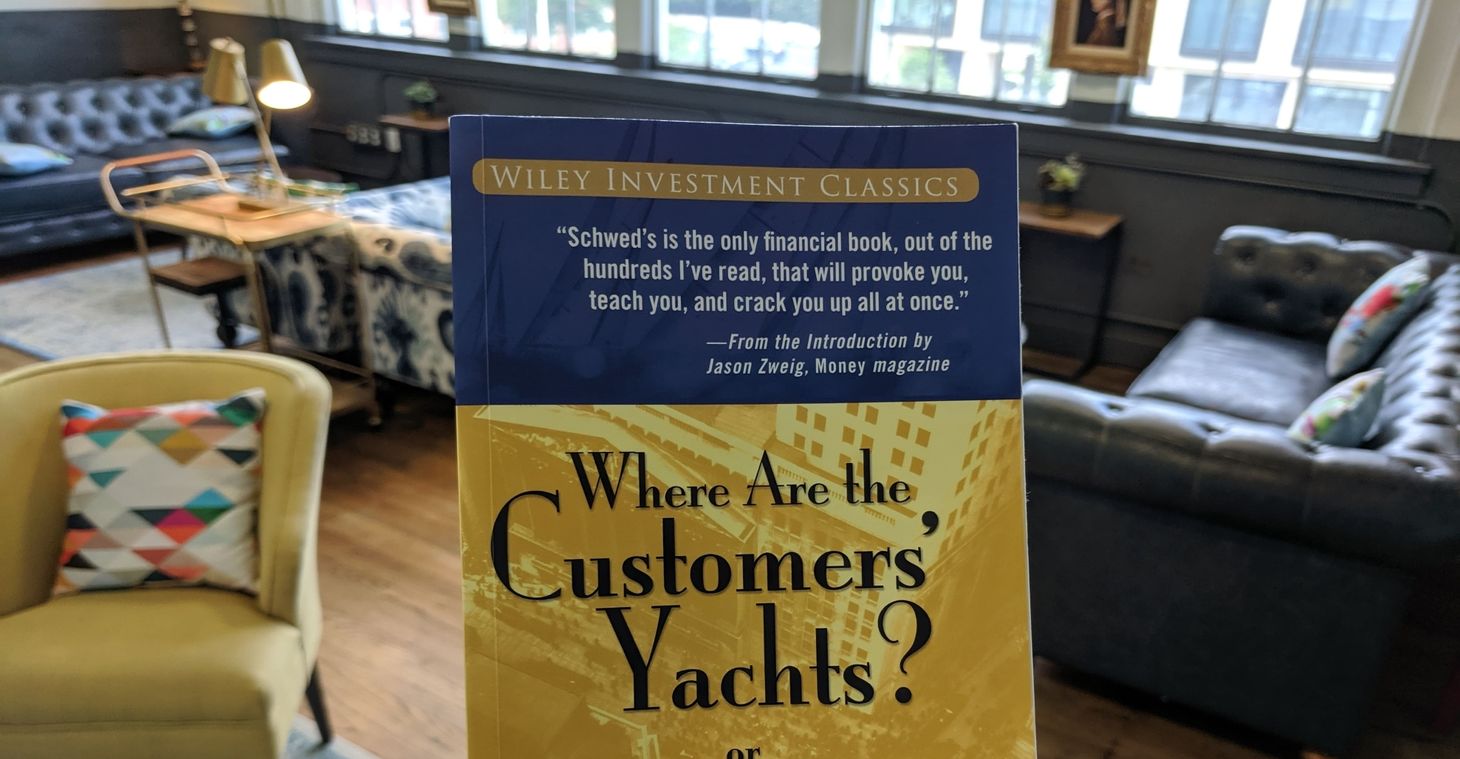Book Summary of Where are the Customers’ Yachts
Key takeaways and quotes from a classic book on markets and the investment business.

Where are the Customers’ Yachts was written in 1940 by Fred Schwed, an investment professional. It’s one of my favorite books on markets and I’m sure it will still be timeless 80 years from now.
The origin of the title:

Here are my takeaways from the book plus some great quotes:
- Making money is different than sounding smart. “I don’t know” is the most difficult answer – but usually the correct one. Some financial professionals have invented a new language for saying nothing in a variety of ways.

- Knowing a problem doesn’t mean you know the solution. For example, some Canadian pension funds are leveraging their portfolios because low expected returns raise the likelihood of future deficits. They identified a problem – but I’m not confident the solution is to lever up ten years into an economic expansion with high valuations and low yields.

- The biggest problem for most investors is their own emotions. This is a trope in financial writing – but it’s so true. If you constantly jump between different strategies you’ll look up at 65 and have little to show for all your years of saving. The best portfolio is the one you’ll actually stick with.
- Safe investments can fall out of fashion. Canal bonds were considered safe until railroads upended the canal industry. Russian government bonds were staples of European investment portfolios until the 1917 revolution wiped out their value.

- The truth about most investors. Most investors don’t admit they are expert rationalizers in finding profound reasons for hunches. “The inability to grasp ultimate realities is the outstanding mental deficiency of the speculator.” Some investors would rather go broke than admit their guess was wrong.

- The ability to sit still is a superpower. Most people “suffer from the inability to do nothing.” Some investors want to own as many securities as possible. Occasionally I get asked why I don’t make satellite allocations to assets like REITs or gold. I wrote a post showing why. A 5% tilt might make an investor feel diversified but it doesn’t impact portfolio performance.
The book is a rare combination of wisdom and wit – I highly recommend it. You can find used copies on Amazon for $5.
